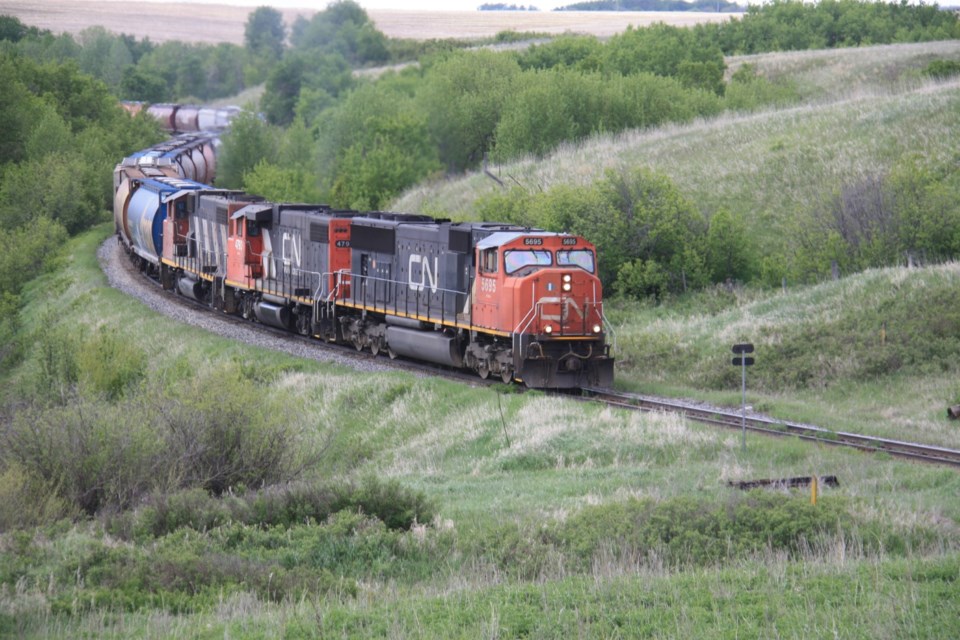Nov. 7, 1885, was a historic day in Canada’s economic development with the meaningful completion of the Canadian Pacific Railway (CPR), marked by the driving of the last spike. This pivotal event not only symbolized the physical unification of the country but also ignited a tradition of profitable railways lobbying for governmental support that has persisted for over a century.
Over more than 140 years, Canadian railways have honed their lobbying efforts into an art form, successfully minimizing competition and maximizing freight rates and profits. Their presence and influence on Parliament Hill are notable, often seeming to surpass the time spent there by elected officials and senators themselves. This has allowed the rail sector to maintain a dominant position in the supply chain, often at the expense of broader market competition and to the detriment of shippers, particularly those in the agricultural sector.
For example, analyses of rail freight rate competitiveness, as outlined in the recent work commissioned by the Railway Association of Canada, are being criticized for their incomplete and selective data. These criticisms highlight a concern that the railway industry often presents information in a manner that serves its interests, potentially influencing policy, to the detriment of a more competitive rail system. This is evident in Bill S-287, An Act to amend the Canada Transportation Act (interswitching) introduced in June 2024 in the aenate, where protecting
railway profits appears to be the priority.
Addressing these issues requires a comprehensive and transparent review of rail costing to ensure objectivity and competitiveness in the industry. Key to this is the understanding and assessment of the Maximum Revenue Entitlement (MRE), the carbon surcharge, the significance of extending interswitching provisions, and the need for freight rate transparency. Each of these factors plays a crucial role in enhancing supply chain efficiency and ensuring the rail system
operates in a manner that serves the broader interests of the Canadian economy and its stakeholders.
The MRE's importance lies in its role in regulating the revenue that railways can earn from the transportation of agricultural products, preventing excessive freight charges that disproportionately affect farmers. Are Western Canadian farmers willing to pay an additional
$2.3 billion in freight charges if the MRE is lost? Similarly, the projected $80 million railway carbon surcharge this year, paid by Saskatchewan farmers, underscores the necessity for a government policy change. Interswitching provisions and rate transparency are also vital for promoting competition within the rail sector, ensuring shippers have fair access to rail services and can make informed decisions based on clear and accurate pricing information.
Are we comfortable with the status quo where railways accrued nearly $54 billion in excess income from 2013 to 2022? Is it acceptable for these entities to continue utilizing inflation-plus pricing strategies? Furthermore, can we overlook the reality that most Canadian shippers have no meaningful railway competition? Do these outcomes reflect a marketplace invigorated by healthy competition between two railways or the consequences of a duopoly where genuine competition is absent?
Do we stand by while the great train robbery continues, methodically draining the life out of grain farmers and countless shippers across Canada or do we champion a rail system that
competes fairly and fosters growth? By tackling the need for a full rail costing review, protecting the MRE, addressing the carbon surcharge, extending interswitching regulations, and enhancing rate transparency, the government can take significant steps toward a more competitive rail system. Such decisive measures promise not only to rejuvenate our agriculture sector but propel the Canadian economy forward. The question remains – are we ready to fight for it?
Ian Boxall is president of APAS
The commentaries offered on Â鶹´«Ã½ are intended to provide thought-provoking material for our readers. The opinions expressed are those of the authors. Contributors' articles or letters do not necessarily reflect the opinion of any Â鶹´«Ã½ staff.




